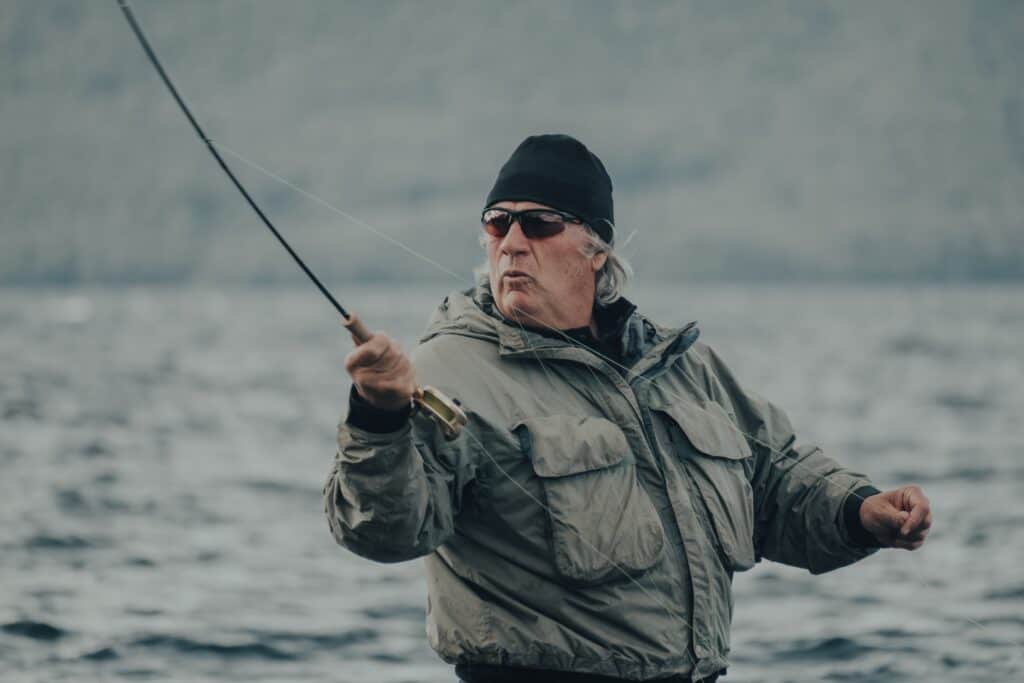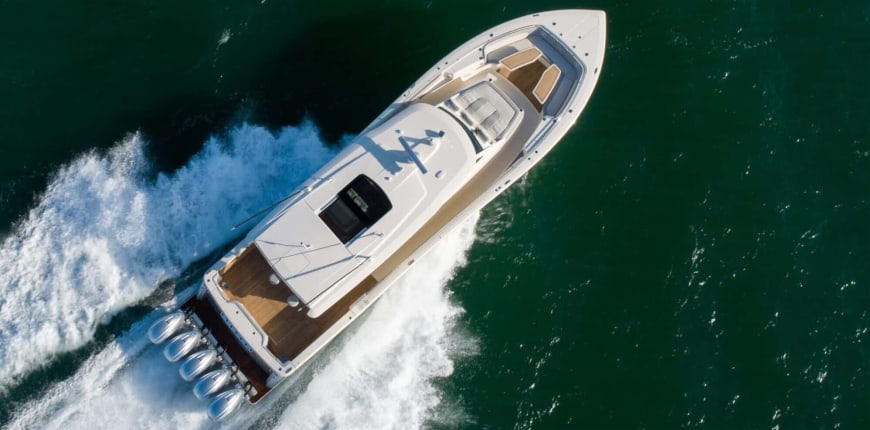
The tide is falling.
Spring tide was three days ago, and you’ve been waiting for this day. Nothing but hot-white sand, warm shallow waters, and a clear sky on the horizon. The three blend, and it’s hard to tell the difference between water, sand, and sun, even with your sunglasses.
You grip your rod gently. Your thumb rubs back and forth over that familiar crater in the cork. This is your favorite 9 weight. You know you’ve picked an irresistible Alphlexo crab fly. Light tan. Now you’re patiently scanning the surface for that unmistakable silhouette and listening for the sound of a gentle tail-flop splash of a Moustached Triggerfish.
This time. This time, you’ll get one. And you’ll get it in the net.
But you know it’ll be a fight.
These fish are called the Jack Russels of the reef for a reason. But honey badger may be a more fitting association. They have no concept of their size and fight like they are three times what they are.
Skillfully, too.
And with a whole assortment of tricks. From testy personalities that change daily to a mouth so full of teeth that they leave no flesh for a hook to bite. Not to mention, when they do get hooked, they’ll turn their flat bodies to the surface and book it across the skinniest of waters to wedge themselves into a coral crevice.
But that’s the thrill, right? Of catching a Moustache Triggerfish on a fly?
Absolutely.
All About the Moustache Triggerfish
The Moustache Triggerfish—also known as a Titan Triggerfish—gets its name from the dark line on its upper lip that looks like, well, a mustache. This unique-looking oval fish has beautiful yellow and orange coloring with distinct black markings. They grow to about 30 inches. Though in their minds, they are much bigger.
Triggerfish are named so because of their forward dorsal fin that they can lock in place. It’s a defense mechanism they employ to wedge themselves securely in the crevices of coral. (Which means you’ll want to keep your hooked fish away from the reef unless you’re willing to dive in after it!)
These carnivorous fish hunt sand dollars, urchins, crab, crustaceans, and coral. They are aggressive and tenacious. They’ll move coconut-sized rocks out of the way to get to their meal.
Also thought of as Canadian Geese of the reef, they are incredibly territorial of their nest. They won’t hesitate to forcibly (and occasionally painfully) remove intruders who have swum too close. Including divers.
The Moustache Triggerfish is one of about 40 in the triggerfish family. While most triggerfish are found in deep water near reefs and wrecks, Moustache Triggerfish—along with the Yellowmargin, Grey, and the petite Picasso Triggerfish—are found in shallow flats. This makes them accessible to catch by fly and a lot of fun.
Unlike the Yellowmargin Triggerfish, which prefer sandy bottoms, the Moustache triggerfish is usually found near reef and coral structures or even seaweed.
Triggerfish are, in my opinion, one of the most underrated fish to target on fly. If GTs are the bulldogs of the flats then triggers have to be the Jack Russell. Small, pugnacious, ideas far above their station and even GTs will steer clear of them in case they are damaged.
—Peter McLeod
Where to Find Moustache Triggerfish
Moustache Triggerfish live in the tropical waters of the Indian and Pacific Oceans. Seychelles, Christmas, Australia, and atolls throughout the Indian Ocean are favorite go-to spots for fly fishing. The calm waters of the Nubian flats of Sudan also boast a prime environment.
Closer to our home base in the Atlantic, the coasts of Florida, Cuba, and Mexico offer abundant opportunities for the sister fish, the Grey Triggerfish. For those anglers with access to the unspoiled and remote Southern Bahamian islands like the Crooked and Acklands Islands, the expansive white-sand bottom flats give flyfishers hundreds of square miles of prime triggerfish country. One of the ultimate flyfishing experiences.
Our Scout tenders unlock these pristine islands and crystal waters for their owners. Quality build, reliability, and seaworthy design allow you to extend your primary vessel’s range and so you can explore miles of exquisite, untouched beaches in luxury. Navigate the cuts, creeks, and flats that are out of reach of even the most exclusive local fly fishing guide camps.
Picking the Right Water
Timing the tides is important. Moustache Triggerfish don’t mind shallow water, so low tide is ideal. But despite their power, they prefer slower moving waters. Water near narrow, rushing cuts or extreme tidal currents should be passed over in favor of more moderate tides and current flow.
Packing the Tacklebox

The preferred setup is a 9-weight fast action saltwater fly rod and a 9-weight fly reel with a good drag. You can tie directly to 35 lb Absolute Flouro or use a 16-20 lb leader at least 12 inches. Depending on your location, weed guards may be needed.
Fly choices are usually crab or shrimp varieties.
Alec Gerbec’s favored Aphlexo crab—now a go-to choice for permits—was originally perfected for the triggerfish. Its rubber legs, buggy eyes, and ability to sink fast provide just the right amount of movement and interest to entice the Moustache Triggerfish to bite.
If you are casting over one of the light-colored sand banks, you’ll want to choose a lighter color bait. If you are casting over turtle grass or darker-colored coral bits, choose a tan, olive, or even orange-colored fly. The idea is to match the color of the seabed floor you are fishing.
Getting ultra-specific, try to match the size and coloring of the local shrimp or crab in your fishing local. Some guides suggest modifying your crab flys to look like they may have eggs during the season.
Tips for catching the Moustache Triggerfish on a Fly
Triggerfish have a complex personality. On the one hand, they are well-known by divers for their fierce territorial behavior and aggressive attacks, and they also display aggressive eating behavior.
Other times they can appear curious. Their large, bulging eyes inquisitively check things out, and sometimes they approach a boat—even flattening their bodies to the surface for a better look.
Other days, they are frustratingly skittish. A slight crunch of coral under your foot and whoop. Gone.
For this reason, you’ll want to make your first cast count, as it may be your only chance. Wait until you see that characteristic tail break the surface. This helps for two reasons. One, you’ll know exactly where your fish is. And two, its chameleon-like eyeballs are pointed down at the sea bottom, making it more likely he will not get spooked when your fly hits the surface.
The downside to this approach? The triggerfish is just lolling around in the tide–letting the water flop him one way or the other. Which means he may pop up facing away from your fly. If this happens, try to get its attention with a quick whip once your bait has touched the bottom so as to stir up the sand.
Once they’ve bit, the challenge becomes setting the hook in their mouth. They have precious-little soft flesh, and their mouths are packed with teeth. And while talking about their teeth (which look weirdly human), give them respect. They use these teeth to break off chunks of coral. They can take a chunk off a finger easily!
This also means they can bite through your hook or leader, too.
Once securely hooked, the battle is long from over. The Moustache Triggerfish will fight with a surprising and thrilling amount of effort. Usually zooming for the closest coral or structure it can find. Do everything you can to keep it away from the coral. Your odds of bringing it in are much higher if you can prevent it from bracing itself in a hole or chafing your line off.
If it doesn’t spit your hook, bite through your leader, cut your line, or embed itself in a coral head, it will still fight you all the way to the net. But, hey, that’s what makes these tricky triggers exhilarating. And for some, a pure fly fishing obsession.
Newsworthy Notes about the Moustache Triggerfish
Triggerfish, in general, are eaten in some locals. However, because they are reef predators, they are very susceptible to Ciguatera poisoning and should only be eaten with caution and with the blessing of reliable local knowledge.
Ciguatera poisoning is caused by a dinoflagellate toxin that builds up in fish as they eat the microscopic marine organism. The fish feel no ill effects but it causes neurologic, muscular, respiratory, and digestive symptoms in humans. Cooking the meat has no effect on the level of the toxin.
Fly Fishing with Scout Boats

Scout Boats appreciates every opportunity to enjoy a day on the water.
Fly fishing for triggerfish is no exception. So whether you’re on one of our Scout tenders striking for a Grey Triggerfish off Long Cay in the Bahamas or seeking the testy Moustache Triggerfish on a fly somewhere in the Indian Ocean, we hope you are having a beautiful—and successful— time.

